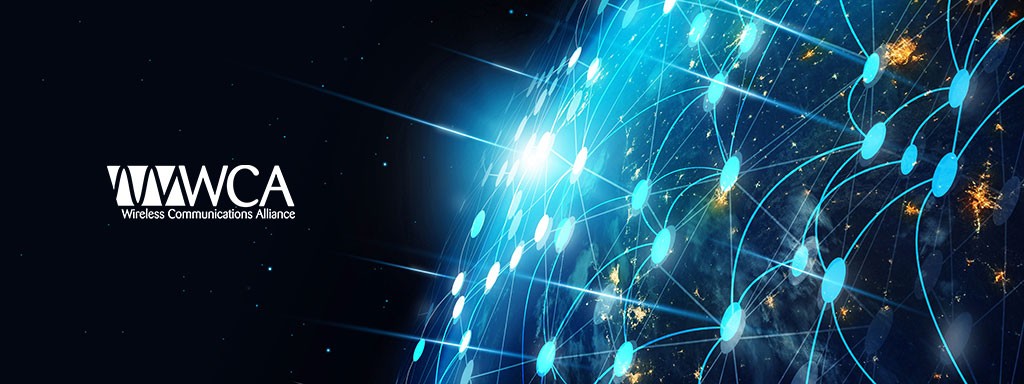
Wireless and Connected Technology Explained. We explore the evolving world of connected technology with depth and clarity. Our analyses uncover emerging trends, assess current advancements, and forecast future innovations. Whether you are an industry professional or simply curious, our exploration of 5G, 6G, IoT, and edge computing offers valuable insight. From industrial IoT and connected AI to mmWave and adaptive network architectures, we examine how these technologies are shaping the next era of digital connectivity.
Networks (5)
Brownfield networks refer to existing telecommunications networks that have been previously developed and deployed, often using legacy technologies and equipment. These networks contrast with “greenfield” networks, built from scratch using the latest technologies and standards. Key aspects of brownfield networks include:
- Legacy Systems: Brownfield networks often include older technologies that may not be compatible with the latest standards or innovations. This includes older generations of wireless technology, like 2G and 3G, or traditional wired networks.
- Integration Challenges: Integrating new technologies or upgrades into brownfield networks can be challenging due to compatibility issues with legacy systems and equipment.
- Cost Considerations: While upgrading brownfield networks can be cost-effective compared to building new infrastructure, the process of modernization can be complex and resource-intensive.
- Maintenance and Operations: Maintaining brownfield networks involves managing aging infrastructure, which may require more frequent repairs and upkeep.
- Migration to Newer Technologies: Transitioning from brownfield to more modern network infrastructures, like 4G, 5G, or fiber-optic networks, often requires strategic planning and phased implementation to minimize service disruptions.
- Customer Base: Brownfield networks typically have an existing customer base, which can be an advantage in terms of market presence, but also poses the challenge of ensuring service continuity during upgrades.
- Regulatory Compliance: Ensuring that brownfield networks comply with current regulatory standards is crucial, especially when integrating new technologies or services.
Understanding and effectively managing brownfield networks is essential for telecommunications operators, especially in the context of ongoing industry advancements and the need for digital transformation.
Greenfield networks refer to telecommunications networks built from scratch with no constraints from existing systems or infrastructures. This term is often used in contrast to “brownfield” networks, which involve upgrading or integrating with existing network infrastructure. Key aspects of greenfield networks include:
- Latest Technologies: Greenfield projects offer the opportunity to deploy the latest technologies, such as 5G in wireless networks or advanced fiber optics in wired networks, without the limitations of legacy systems.
- Design and Implementation Flexibility: Building a greenfield network allows for more flexibility in design and implementation, enabling a more optimized and efficient network architecture that is future-proof.
- Cost Considerations: While the initial investment for a greenfield project might be high due to the need for new infrastructure, it can be more cost-effective in the long term due to lower maintenance and operational costs.
- Faster Deployment of Advanced Services: Greenfield networks can more rapidly deploy advanced services and applications, benefiting from the inherent efficiencies and capabilities of the latest technologies.
- Challenges in Market Penetration: For new operators, establishing a greenfield network can be challenging in terms of gaining market share and attracting customers, especially in regions with established competitors.
- Regulatory Compliance: Greenfield projects must comply with all current regulatory standards and requirements, which can vary depending on the region and the type of services offered.
- Sustainability and Environmental Considerations: New network deployments can incorporate sustainability practices and eco-friendly technologies from the outset.
Greenfield networks represent an ideal scenario for deploying the most advanced telecommunications technologies and can set the foundation for innovative services and applications. They are particularly relevant in areas without existing telecommunications infrastructure or where the existing infrastructure is insufficient to meet current and future demands.
The official release dates of Wi-Fi 4, Wi-Fi 5, Wi-Fi 6, and Wi-Fi 7 (as per the IEEE standardization and Wi-Fi Alliance naming conventions) are as follows:
- Wi-Fi 4 (IEEE 802.11n):
- Standard Finalized: October 2009
- Wi-Fi 4 is the designation given to the IEEE 802.11n standard, which significantly improved upon previous Wi-Fi standards by introducing technologies like MIMO and increased data rates.
- Wi-Fi 5 (IEEE 802.11ac):
- Standard Finalized: January 2014 (Wave 1), December 2013 (Wave 2)
- Wi-Fi 5 refers to the IEEE 802.11ac standard, which enhanced Wi-Fi performance further by introducing features like wider channel bandwidth and support for additional spatial streams.
- Wi-Fi 6 (IEEE 802.11ax):
- Standard Finalized: September 2019
- Wi-Fi 6, known technically as IEEE 802.11ax, brought significant advancements in efficiency, especially in crowded environments, and introduced technologies like OFDMA and Target Wake Time (TWT).
- Wi-Fi 7 (IEEE 802.11be):
- Expected Finalization: As of my last update in April 2023, Wi-Fi 7 (IEEE 802.11be) was still in development, with finalization expected around 2024.
- Wi-Fi 7 is expected to offer further improvements in terms of data rates, latency, and efficiency, continuing the evolution of Wi-Fi technology.
These release dates mark important milestones in the development of Wi-Fi technology, with each new generation bringing enhancements that have enabled faster speeds, greater capacity, and more efficient network performance.
- Types of Roaming:
- Domestic Roaming: Occurs when a user connects to another operator’s network within their home country.
- International Roaming: Involves using a mobile device on a foreign operator’s network while traveling abroad.
- Roaming Agreements: Mobile operators enter agreements with other operators to enable roaming for their subscribers. These agreements cover aspects like service standards, pricing, and data exchange.
- Seamless Connectivity: Roaming is designed to provide seamless service, with users able to use their mobile phones for calls, text messages, and data services just as they do at home.
- Charges and Tariffs: Roaming often incurs additional charges, which can vary significantly depending on the operators involved and the user’s service plan. International roaming, in particular, can be expensive.
- SIM Card and Network Compatibility: Effective roaming depends on the compatibility between the user’s mobile device and SIM card and the visited network, particularly in terms of supported frequency bands and network technologies.
- Roaming Partners and Coverage: Mobile operators typically publish lists of their roaming partners and the countries where roaming services are available.
- Regulatory Aspects: In some regions, like the European Union, regulations have been put in place to control roaming charges and protect consumers from high fees.
- Data Roaming: This allows users to access the internet and use data-driven services. Data roaming can be particularly costly, and users often have the option to disable it.
GSM (Global System for Mobile Communications) is a standard developed by the European Telecommunications Standards Institute (ETSI) to describe the protocols for second-generation (2G) digital cellular networks used by mobile devices such as phones and tablets. Introduced in the 1990s, GSM was a major leap in mobile communication technology. Key aspects of GSM include:
- Digital Communication: GSM marked the transition from analog first-generation (1G) networks to digital, significantly improving voice quality, security, and capacity.
- Global Standard: As its name suggests, GSM became a global standard for mobile communication, facilitating international roaming and compatibility.
- Network Components: GSM networks consist of key subsystems like the Base Station Subsystem (BSS), Network and Switching Subsystem (NSS), and the Operations and Support Subsystem (OSS).
- SIM Cards: GSM introduced the use of SIM (Subscriber Identity Module) cards, which store subscriber data and facilitate mobile device identification and authentication on the network.
- Data Services: Besides voice communication, GSM supports data services such as SMS (Short Message Service) and later, GPRS (General Packet Radio Services) for basic internet connectivity.
- Encryption and Security: GSM networks employ encryption to secure voice and data communication, enhancing privacy and security.
- Frequency Bands: GSM operates in multiple frequency bands, like 900 MHz and 1800 MHz in Europe and 850 MHz and 1900 MHz in the Americas, catering to different regional requirements.
GSM set the foundation for modern mobile communication and led to the development of more advanced technologies like 3G (UMTS) and 4G (LTE).
WIreless Technologies (1)
GSM (Global System for Mobile Communications) is a standard developed by the European Telecommunications Standards Institute (ETSI) to describe the protocols for second-generation (2G) digital cellular networks used by mobile devices such as phones and tablets. Introduced in the 1990s, GSM was a major leap in mobile communication technology. Key aspects of GSM include:
- Digital Communication: GSM marked the transition from analog first-generation (1G) networks to digital, significantly improving voice quality, security, and capacity.
- Global Standard: As its name suggests, GSM became a global standard for mobile communication, facilitating international roaming and compatibility.
- Network Components: GSM networks consist of key subsystems like the Base Station Subsystem (BSS), Network and Switching Subsystem (NSS), and the Operations and Support Subsystem (OSS).
- SIM Cards: GSM introduced the use of SIM (Subscriber Identity Module) cards, which store subscriber data and facilitate mobile device identification and authentication on the network.
- Data Services: Besides voice communication, GSM supports data services such as SMS (Short Message Service) and later, GPRS (General Packet Radio Services) for basic internet connectivity.
- Encryption and Security: GSM networks employ encryption to secure voice and data communication, enhancing privacy and security.
- Frequency Bands: GSM operates in multiple frequency bands, like 900 MHz and 1800 MHz in Europe and 850 MHz and 1900 MHz in the Americas, catering to different regional requirements.
GSM set the foundation for modern mobile communication and led to the development of more advanced technologies like 3G (UMTS) and 4G (LTE).
Networks (5)
Brownfield networks refer to existing telecommunications networks that have been previously developed and deployed, often using legacy technologies and equipment. These networks contrast with “greenfield” networks, built from scratch using the latest technologies and standards. Key aspects of brownfield networks include:
- Legacy Systems: Brownfield networks often include older technologies that may not be compatible with the latest standards or innovations. This includes older generations of wireless technology, like 2G and 3G, or traditional wired networks.
- Integration Challenges: Integrating new technologies or upgrades into brownfield networks can be challenging due to compatibility issues with legacy systems and equipment.
- Cost Considerations: While upgrading brownfield networks can be cost-effective compared to building new infrastructure, the process of modernization can be complex and resource-intensive.
- Maintenance and Operations: Maintaining brownfield networks involves managing aging infrastructure, which may require more frequent repairs and upkeep.
- Migration to Newer Technologies: Transitioning from brownfield to more modern network infrastructures, like 4G, 5G, or fiber-optic networks, often requires strategic planning and phased implementation to minimize service disruptions.
- Customer Base: Brownfield networks typically have an existing customer base, which can be an advantage in terms of market presence, but also poses the challenge of ensuring service continuity during upgrades.
- Regulatory Compliance: Ensuring that brownfield networks comply with current regulatory standards is crucial, especially when integrating new technologies or services.
Understanding and effectively managing brownfield networks is essential for telecommunications operators, especially in the context of ongoing industry advancements and the need for digital transformation.
Greenfield networks refer to telecommunications networks built from scratch with no constraints from existing systems or infrastructures. This term is often used in contrast to “brownfield” networks, which involve upgrading or integrating with existing network infrastructure. Key aspects of greenfield networks include:
- Latest Technologies: Greenfield projects offer the opportunity to deploy the latest technologies, such as 5G in wireless networks or advanced fiber optics in wired networks, without the limitations of legacy systems.
- Design and Implementation Flexibility: Building a greenfield network allows for more flexibility in design and implementation, enabling a more optimized and efficient network architecture that is future-proof.
- Cost Considerations: While the initial investment for a greenfield project might be high due to the need for new infrastructure, it can be more cost-effective in the long term due to lower maintenance and operational costs.
- Faster Deployment of Advanced Services: Greenfield networks can more rapidly deploy advanced services and applications, benefiting from the inherent efficiencies and capabilities of the latest technologies.
- Challenges in Market Penetration: For new operators, establishing a greenfield network can be challenging in terms of gaining market share and attracting customers, especially in regions with established competitors.
- Regulatory Compliance: Greenfield projects must comply with all current regulatory standards and requirements, which can vary depending on the region and the type of services offered.
- Sustainability and Environmental Considerations: New network deployments can incorporate sustainability practices and eco-friendly technologies from the outset.
Greenfield networks represent an ideal scenario for deploying the most advanced telecommunications technologies and can set the foundation for innovative services and applications. They are particularly relevant in areas without existing telecommunications infrastructure or where the existing infrastructure is insufficient to meet current and future demands.
The official release dates of Wi-Fi 4, Wi-Fi 5, Wi-Fi 6, and Wi-Fi 7 (as per the IEEE standardization and Wi-Fi Alliance naming conventions) are as follows:
- Wi-Fi 4 (IEEE 802.11n):
- Standard Finalized: October 2009
- Wi-Fi 4 is the designation given to the IEEE 802.11n standard, which significantly improved upon previous Wi-Fi standards by introducing technologies like MIMO and increased data rates.
- Wi-Fi 5 (IEEE 802.11ac):
- Standard Finalized: January 2014 (Wave 1), December 2013 (Wave 2)
- Wi-Fi 5 refers to the IEEE 802.11ac standard, which enhanced Wi-Fi performance further by introducing features like wider channel bandwidth and support for additional spatial streams.
- Wi-Fi 6 (IEEE 802.11ax):
- Standard Finalized: September 2019
- Wi-Fi 6, known technically as IEEE 802.11ax, brought significant advancements in efficiency, especially in crowded environments, and introduced technologies like OFDMA and Target Wake Time (TWT).
- Wi-Fi 7 (IEEE 802.11be):
- Expected Finalization: As of my last update in April 2023, Wi-Fi 7 (IEEE 802.11be) was still in development, with finalization expected around 2024.
- Wi-Fi 7 is expected to offer further improvements in terms of data rates, latency, and efficiency, continuing the evolution of Wi-Fi technology.
These release dates mark important milestones in the development of Wi-Fi technology, with each new generation bringing enhancements that have enabled faster speeds, greater capacity, and more efficient network performance.
- Types of Roaming:
- Domestic Roaming: Occurs when a user connects to another operator’s network within their home country.
- International Roaming: Involves using a mobile device on a foreign operator’s network while traveling abroad.
- Roaming Agreements: Mobile operators enter agreements with other operators to enable roaming for their subscribers. These agreements cover aspects like service standards, pricing, and data exchange.
- Seamless Connectivity: Roaming is designed to provide seamless service, with users able to use their mobile phones for calls, text messages, and data services just as they do at home.
- Charges and Tariffs: Roaming often incurs additional charges, which can vary significantly depending on the operators involved and the user’s service plan. International roaming, in particular, can be expensive.
- SIM Card and Network Compatibility: Effective roaming depends on the compatibility between the user’s mobile device and SIM card and the visited network, particularly in terms of supported frequency bands and network technologies.
- Roaming Partners and Coverage: Mobile operators typically publish lists of their roaming partners and the countries where roaming services are available.
- Regulatory Aspects: In some regions, like the European Union, regulations have been put in place to control roaming charges and protect consumers from high fees.
- Data Roaming: This allows users to access the internet and use data-driven services. Data roaming can be particularly costly, and users often have the option to disable it.
GSM (Global System for Mobile Communications) is a standard developed by the European Telecommunications Standards Institute (ETSI) to describe the protocols for second-generation (2G) digital cellular networks used by mobile devices such as phones and tablets. Introduced in the 1990s, GSM was a major leap in mobile communication technology. Key aspects of GSM include:
- Digital Communication: GSM marked the transition from analog first-generation (1G) networks to digital, significantly improving voice quality, security, and capacity.
- Global Standard: As its name suggests, GSM became a global standard for mobile communication, facilitating international roaming and compatibility.
- Network Components: GSM networks consist of key subsystems like the Base Station Subsystem (BSS), Network and Switching Subsystem (NSS), and the Operations and Support Subsystem (OSS).
- SIM Cards: GSM introduced the use of SIM (Subscriber Identity Module) cards, which store subscriber data and facilitate mobile device identification and authentication on the network.
- Data Services: Besides voice communication, GSM supports data services such as SMS (Short Message Service) and later, GPRS (General Packet Radio Services) for basic internet connectivity.
- Encryption and Security: GSM networks employ encryption to secure voice and data communication, enhancing privacy and security.
- Frequency Bands: GSM operates in multiple frequency bands, like 900 MHz and 1800 MHz in Europe and 850 MHz and 1900 MHz in the Americas, catering to different regional requirements.
GSM set the foundation for modern mobile communication and led to the development of more advanced technologies like 3G (UMTS) and 4G (LTE).
WIreless Technologies (1)
GSM (Global System for Mobile Communications) is a standard developed by the European Telecommunications Standards Institute (ETSI) to describe the protocols for second-generation (2G) digital cellular networks used by mobile devices such as phones and tablets. Introduced in the 1990s, GSM was a major leap in mobile communication technology. Key aspects of GSM include:
- Digital Communication: GSM marked the transition from analog first-generation (1G) networks to digital, significantly improving voice quality, security, and capacity.
- Global Standard: As its name suggests, GSM became a global standard for mobile communication, facilitating international roaming and compatibility.
- Network Components: GSM networks consist of key subsystems like the Base Station Subsystem (BSS), Network and Switching Subsystem (NSS), and the Operations and Support Subsystem (OSS).
- SIM Cards: GSM introduced the use of SIM (Subscriber Identity Module) cards, which store subscriber data and facilitate mobile device identification and authentication on the network.
- Data Services: Besides voice communication, GSM supports data services such as SMS (Short Message Service) and later, GPRS (General Packet Radio Services) for basic internet connectivity.
- Encryption and Security: GSM networks employ encryption to secure voice and data communication, enhancing privacy and security.
- Frequency Bands: GSM operates in multiple frequency bands, like 900 MHz and 1800 MHz in Europe and 850 MHz and 1900 MHz in the Americas, catering to different regional requirements.
GSM set the foundation for modern mobile communication and led to the development of more advanced technologies like 3G (UMTS) and 4G (LTE).














































